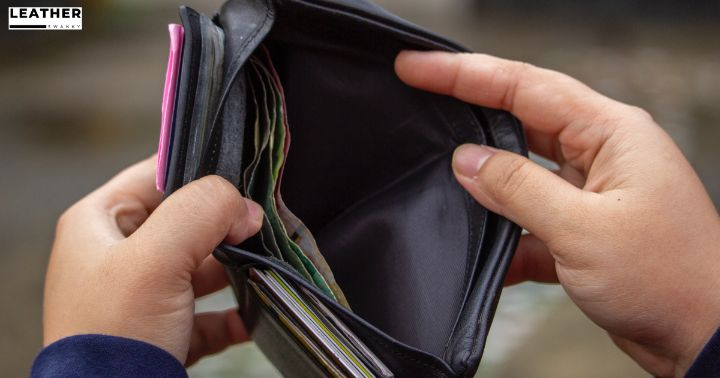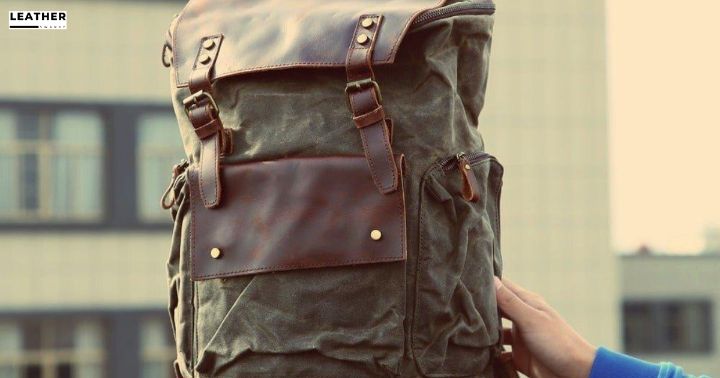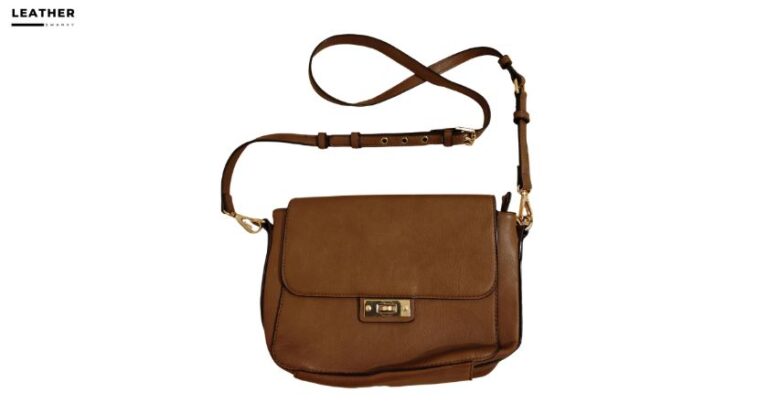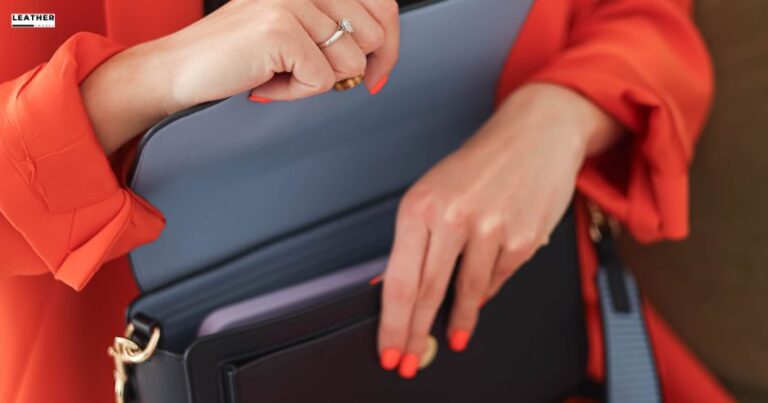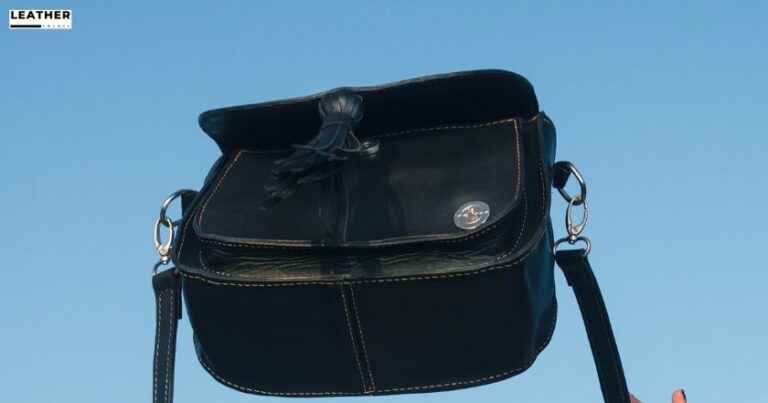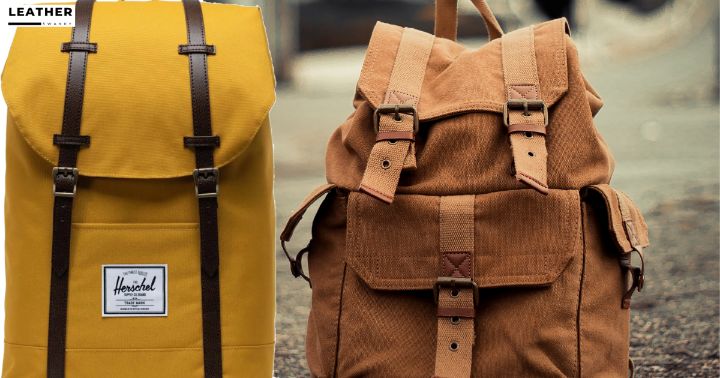How to Remove Mold From Leather Bag? 11 Best Ways to Do It
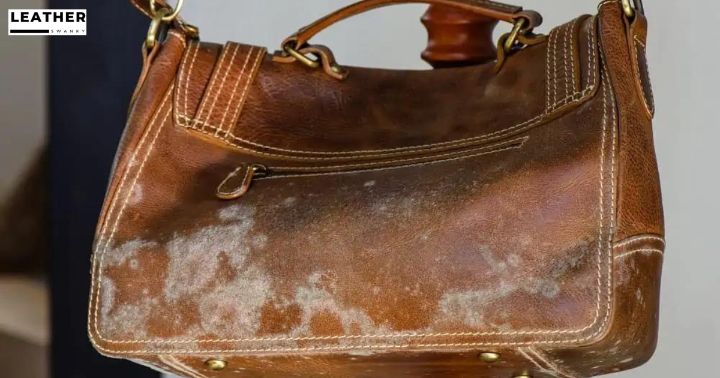
Having a leather bag is great, but it can quickly become a nightmare if mold and mildew start to form. If you’re noticing an unpleasant smell coming from your bag, or if you see discolored spots on the surface, it’s time to take action.
In this guide, we will show you 11 ways how to remove mold from leather bags and provide additional tips for keeping your bag mold-free.
Jump to a Specific Section
- 1 Key Takeaways
- 2 What is Mold?
- 3 Why Do Leather Bags Develop Mold & Mildew?
- 4 Things You Will Need
- 5 How To Remove Mold From Leather Bag? 11 Ways
- 6 Important Tips for Cleaning Mold and Mildew from Leather Bags
- 7 Is Leather Mold Dangerous?
- 8 How to Remove Moldy Smell from Your Leather Bag
- 9 Additional Tips and Tricks
- 10 Final Thought
- 11 Frequently Asked Questions
- 11.1 What Is the Best Way to Prevent Mold Growth in a Leather Bag?
- 11.2 How Long Does It Take for Mold to Grow on Leather Bags?
- 11.3 Can I Use a Home Remedy to Clean Mold From My Leather Bag?
- 11.4 Does Mold on My Leather Bag Affect the Longevity of the Bag?
- 11.5 Is It Necessary to Use a Commercial Cleaner to Clean Mold off a Leather Bag?
- 11.6 How can I prevent mold from growing on my leather bag?
- 11.7 How do I remove mold from my leather bag?
- 11.8 Can mold grow on leather?
- 11.9 How should I clean my leather bag?
- 11.10 What can cause mold to develop on my leather bag?
- 11.11 Can I use acetone to remove mold from the leather?
- 11.12 How do I remove mildew from leather?
- 11.13 Can mold and mildew affect the quality of my leather bag?
- 11.14 How should I store my leather bag to prevent mold and mildew growth?
- 11.15 Are there any spots on leather that are more prone to mold and mildew?
- 12 Resources Used for Research
Key Takeaways
- Mold and mildew thrive in damp areas, so it is important to keep leather bags dry and away from moisture.
- Regular cleaning with specialized leather cleaning products can help prevent mold and mildew buildup on leather bags.
- Act fast when mold is detected to prevent further damage and costly removal processes.
- Using the right combination of cleaners and tools is important to safely remove mold from leather bags without damaging the leather.
What is Mold?
You may not know it, but mold is a type of fungi that can damage your leather bag. It is very important to remove mold from leather bags as soon as you notice it, as it can quickly spread and cause more serious damage over time.
The most common causes for mold growth on leather bags are excess humidity and dampness, so make sure to store them in a dry environment. Mildew is also a type of fungi that has similar characteristics to mold; however, mildew usually appears whitish and powdery in texture.
The key to removing mold or mildew from leather is to act fast and use the correct cleaning products. You should begin by wiping the affected area with a soft cloth dampened with warm water mixed with a small amount of mild soap such as saddle soap or Castile soap.
Once this mixture has been applied, you should use a specialized leather conditioner like mink oil or neatsfoot oil to restore hydration levels back into the bag’s material without leaving behind any residue.
Why Do Leather Bags Develop Mold & Mildew?
Humidity and dampness can cause mold & mildew to form on items made of leather. Mold and mildew thrive in damp areas, including leather bags that are not stored properly.
If you want to remove mold from your leather bag, it’s important to understand why these conditions can lead to its development in the first place.
Leather bags that are exposed to moisture or humidity for long periods of time will begin to develop mold and mildew growth over time. The warm environment combined with high humidity levels creates an ideal breeding ground for the spores found in mold and mildew.
Additionally, if the bag is kept in a poorly ventilated area, such as a storage closet, moisture could build up inside the material and create a hospitable environment for mold growth.
In order to prevent this from happening, it is important that you store your leather bags in a cool, dry space away from direct sunlight or other sources of heat or moisture.
Cleaning your leather bag regularly with specialized cleaning products designed specifically for leather will also help reduce any potential buildup of mold & mildew. With proper care and attention, you can keep your prized possession looking great for years.
Taking these steps now will save you significant amounts of money spent trying to remove existing mold later on – plus protect those precious items inside. Keeping these tips in mind when storing your leather bags will ensure they remain free from any unwanted guests like mold & mildew.
Things You Will Need
To protect your leather bag from mold & mildew, you’ll need some specialized cleaning products. To remove mold from a leather bag, you could use:
- A leather cleaner specifically designed to kill and remove mold
- A mild soap or detergent solution
- White vinegar diluted in water
- A soft cloth or brush to remove any residual mold spores. It’s important to know how to clean leather properly so that you don’t damage the material while removing the mold.
Using the right combination of cleaners and tools will ensure that your leather bag stays looking great for years to come. When using a leather cleaner, make sure it’s made specifically for use on leather as many generic cleaners can be too harsh and cause discoloration or other damage.
For best results, combine a gentle cleaning agent with a soft cloth or brush to wipe away any remaining dirt or grime, and then dry off the surface thoroughly with a dry towel before applying any conditioner or polish.
How To Remove Mold From Leather Bag? 11 Ways
Identifying the affected area of your leather bag is the first step towards removing mold from it. Using a soft brush, look for any visible damage in the bag and then begin cleaning with white vinegar or baking soda.
Both are effective ways to get rid of mold and mildew, leaving your bag looking fresh and new again. With a little bit of effort, you can restore your leather bag back to its original condition.
Identify the Affected Area
Before beginning any cleaning process, it’s important to locate the affected area of the leather bag. To identify where the mold is on your bag:
- Inspect its surface for discoloration or an unusual texture
- Smell around it, as mold has a distinct musty odor
- Look for signs of water damage or staining
- Feel around it to see if there are any patches of dampness. Once you have identified where the mold is, you can proceed with removing it from your leather bag.
Using a Brush
Using an old, soft-bristled brush, gently scrub the affected area to loosen any mold buildup. Be sure to use a clean cloth to remove any excess dirt and debris after brushing. Utilizing this method will help reduce the spread of mold spores and mildew from leather bags.
It may also help prevent further mold growth in the future. Use a light circular motion when brushing and be careful not to rub too hard as it can damage the leather fibers. After brushing, inspect carefully for any signs of damage or areas that need extra attention.
Look for Damage in the Bag
Now that you’ve used a brush to remove the mold from your leather bag, take a look at the bag for any damage. The wrong cleaning technique can cause irreparable damage to your leather, so it’s important to do this step correctly. To maintain your leather and avoid further damage, here are some things to check for:
- Examine the surface of the bag for any discoloration or cracks.
- Check inside pockets and seams for signs of mildew or mold growth.
- Smell around the bag for musty odors caused by mold growth.
- Look closely at all exposed stitching for signs of fraying or tearing.
Using White Vinegar
White vinegar is another effective way to clean up any mildew growth on your prized possessions. When it comes to removing mold from a leather bag, using white vinegar is an easy and inexpensive method. To start, mix one part of white vinegar with two parts of warm water in a container.
Dip a soft cloth into the mixture and wring out the excess liquid before using it to wipe off the mold from the bag’s surface. Keep repeating this process until all of the mold has been removed completely. Additionally, you can also spray some white vinegar directly onto the affected area for extra cleaning power.
Once done, let your bag dry naturally or use a blow dryer on a low heat setting to speed up the drying process. This simple and effective mold removal method should help restore your leather bag back to its original condition.
Using Baking Soda
Try sprinkling baking soda on the affected area to help eliminate mildew and get rid of any unpleasant odors. To remove mold from your leather bag, you’ll need to take some steps:
- Vacuum out the interior of the bag with an upholstery attachment to remove any surface mold spores.
- Liberally sprinkle baking soda over all surfaces of the bag and let sit for 1-2 hours.
- Vacuum up as much baking soda as possible before wiping it down with a damp cloth or rag.
- Finally, use a soft brush to scrub away any remaining mold spots. Baking soda is great at killing mold and mildew that grow on leather items, making it an ideal choice when trying to remove mold from leather bags. With this method, you can restore your bag back to its original pristine condition in no time.
Using Saddle Soap
Saddle soap is another great option for getting rid of mold from leather items. It’s important to first determine the type of leather on your bag before commencing with cleaning. Depending on the material, you may need to use a different method or even avoid using saddle soap altogether.
If your bag is made of full-grain leather, for instance, it can be safely cleaned with saddle soap. Begin by wiping down the affected area with a damp cloth to remove any surface dirt and debris. Then lather up some saddle soap and rub it into the leather in circular motions until it starts to foam up.
Rinse off the soapy residue and allow the item to air dry completely before taking further steps to remove any remaining mold. This method is one of many ways to effectively remove mold from your leather bag, so keep exploring other options if this isn’t enough.
Using Denatured Alcohol
If your item is made of leather, you can also use denatured alcohol to get rid of mold from your leather bag. Here are some steps for removing mold or mildew:
- Start by preparing a mixture of equal parts denatured alcohol and water in a bowl
- Use a soft cloth to apply the mixture onto any affected areas on your leather bag
- Allow the liquid to sit until it dries completely and then wipe away with another soft cloth
- Finish up by conditioning the leather with a specialized cream or oil to prevent any damage. Be sure not to saturate the leather as this could cause further damage.
Using Rubbing Alcohol
Rubbing alcohol is an effective way to get rid of mold on leather items. If you’ve got mold on your leather handbag, rubbing alcohol can help restore it back to its former glory.
Start by first cleaning the affected area with a damp cloth and allow it to dry. Then pour some rubbing alcohol into a bowl or container and dip a clean white cloth into it before dabbing the affected area.
Continue until all areas are saturated in rubbing alcohol, which will help get rid of the mold. Wipe off any excess liquid with another clean cloth and let the item air-dry for several hours. Finally, condition your leather after using rubbing alcohol to ensure that it remains soft and supple.
Using Lemon Juice
Lemon juice is another great option for tackling mold on leather items. It can be used to clean and eliminate the mold from your leather bag without compromising the integrity of the material. Here are some tips for using lemon juice to clean your leather bag:
- Mix equal parts of lemon juice with water
- Dip a soft cloth into the mixture and gently rub it into the affected area
- Rinse off with lukewarm water and allow it to dry naturally
- Once dry, use a leather cleaning product to restore its original shine. Using lemon juice is an effective way to prevent mold from developing in your bag in the future. With regular care and maintenance, you can keep your leather bag looking perfect for years to come.
Use Baby Shampoo to Clean Leather
Using baby shampoo is an easy way to keep your leather looking clean and fresh. It can help remove mold from the surface of your leather bag while safeguarding it against further damage.
| Method | Time | Result |
|---|---|---|
| Clean with Baby Shampoo | 30 minutes | Mold Removed |
| Condition Leather Bag | 1 hour | Protection Against Future Damage |
A simple solution, using baby shampoo provides a quick and effective way to maintain the look of your leather bag while keeping mold from forming. With this method, you’re sure to have clean leather that will last for years.
Condition Your Leather Bag
Conditioning your leather is essential for preserving its look and ensuring it lasts for years. To maintain your leather goods, you must protect them from mold and mildew, two leading causes of damage to the leather. Here are some steps to help condition your leather bag:
- Clean the surface with a damp cloth and let dry completely.
- Use a specialized leather cleaner to remove any dirt or debris that may be embedded in the material.
- Apply a quality waterproofing product designed specifically for leather bags to help protect them against future moisture damage.
- Condition your bag regularly using an appropriate product made for this purpose. This will help keep the material soft and supple, while also protecting it from water damage and other environmental factors.
Taking these steps will ensure that you can clean a leather bag without worrying about mold or mildew buildup over time. With proper care, you can enjoy your beautiful leather bag for many years to come.
Important Tips for Cleaning Mold and Mildew from Leather Bags
When you’re cleaning mold and mildew from leather bags, there are a few key things to keep in mind. First, avoid using acetone or any other harsh chemicals as this could damage the leather. Secondly, make sure your leather bag is properly stored when not in use and that the storage space’s condition is well maintained.
Finally, understand your environment; if it’s humid or damp outside, this can increase the likelihood of mold growth on your bag. With these tips in mind, you can keep your leather bag looking its best.
Avoid Using Acetone
It’s best to avoid using acetone when removing mold from leather bags, as it can damage the material. To keep your leather in great condition and prevent mold and mildew, you should:
- Dry your bag after any exposure to moisture.
- Store it in a cool, dry place away from direct sunlight.
- Clean regularly with appropriate cleaning products.
- Avoid placing your bag in an area with high humidity – this is the perfect environment for mold to grow! Following these steps will help stop mold from growing on your leather bag.
Don’t Use Chemicals
You don’t want to use harsh chemicals when cleaning your leather items; instead, opt for more natural methods. A microfiber cloth should be used to remove mold from the surface without damaging it.
Acetone can weaken the leather fiber structures and cause them to peel away. Therefore, any patches on the leather should be avoided as well. In addition, the use of such substances could also weaken the protective finish of your leather bag or item in general.
To ensure that mold is indeed entirely gone from your bag, make sure you clean it with a damp cloth and keep it dry by stuffing it with tissue paper or newspaper if needed. This way you’ll avoid further damage and have a beloved item looking like new again.
Properly Store Your Leather Bag
Storing your leather item correctly is key to preserving its condition and preventing any damage. To take care of your leather bag, or any other leather dress shoes, you should:
- Keep it in a cool and dry place
- Avoid exposing it to direct sunlight
- Stuff the bag lightly with acid-free tissue paper
- Refrain from using plastic bags that are not breathable Mold growth can be prevented by properly storing your leather items. Appropriate storage will also ensure that your leather looks new for longer.
Maintain the Storage Space’s Condition
To ensure your storage space remains in good condition, regularly check it for any signs of moisture or humidity. Mold can easily grow on leather surfaces and products if the environment is not well-maintained. To prevent this, make sure you store your leather bags in a dry place with good air circulation.
If the environment is too humid, consider using a dehumidifier or other methods to reduce the level of moisture. It’s also important to keep an eye out for any mold growth on the leather surface as it can be difficult to remove once established.
With regular maintenance and care, you will be able to protect your leather bag from any mold damage and keep them looking great for years. As you maintain your storage space’s condition, it’s also helpful to understand your environment and what risks might be present.
Understand Your Environment
It’s important to understand your environment in order to keep items stored safely and prevent any potential damage.
When it comes to preventing mold growth on your leather bag, you should consider the areas where you store it, the temperature of those areas, humidity levels, and air circulation. To ensure that mold does not grow on your leather bag, remember these key points:
- Look for areas with a low humidity level and high air circulation.
- Avoid storing your leather bag in damp or wet places.
- Check the color of the leather regularly. Changes can indicate a problem with mold growth.
- Be aware of any musty odors which may be present near the storage area as this could also be an indicator of mold growth on your leather bag.
Taking proactive steps to understand and monitor your environment can help prevent any mold from growing on your leather bag over time. With this knowledge, you will be better equipped to take action and protect against mold growth.
Use a Dehumidifier
Now that you understand your environment and what type of mold is likely to grow, you can use a dehumidifier to help reduce the leading causes of mold growth. Keep in mind, however, that when using a dehumidifier on leather furniture, it’s important to find one that is suitable for leather.
In addition, be sure not to leave it running for too long or at too high a temperature as this could cause damage. Cleaning leather without damaging it can be tricky so make sure you use a specialized cleaner specifically designed for leather furniture.
This will help preserve the quality of the material while also helping prevent further mold growth. Finally, don’t forget to regularly clean the dehumidifier itself, this should help ensure it does its job properly and keep your leather free from mold.
Use Silica Gel
To protect your furniture from moisture build-up, you should consider using silica gel. This highly absorbent material is ideal for removing mold and mildew from leather shoes, bags, and other items.
It can be used to remove mold from the surface of the bag and leave it looking like new again. Here are some ways to use silica gel to clean your leather bag:
- Place a layer of silica gel on the surface of the bag.
- Let it sit overnight or longer until all moisture has been absorbed by the gel.
- Carefully brush away any dirt or debris that may have accumulated on the surface of the bag while drying.
- Vacuum away any remaining particles left behind after brushing off dirt and debris. By taking these steps, you can effectively remove mold and mildew stains from your leather bag without causing any further damage.
Prevention Is Better Than Cure
By taking proactive steps to keep your belongings dry, you’ll be better prepared to avoid mold and mildew damage in the future. Protecting your favorite leather bag, shoes, or even leather car seats from moisture is key.
Make sure to store items in a dry place and away from direct sunlight that may cause them to fade or crack. When cleaning your leather item, use an appropriate cleaner for the type of leather and test on a small area first. Wiping down the surface of the leather with a soft cloth will remove dirt and debris.
If there are different kinds of leather in one item, ensure that you use appropriate cleaners for each type. Taking preventive measures now will help maintain the quality of your beloved possessions well into the future.
Is Leather Mold Dangerous?
It’s important to know if leather mold is dangerous since it can be difficult to remove. Leather mold tends to form when leather is damp, so you should always check inside your bag and make sure the leather isn’t wet. Here are some things that can occur from having leather mold:
- Patches on the leather where it has been discolored by the mold.
- Spots on the leather have caused a change in texture along with visible discoloration.
- A musty smell coming off of the material, which could indicate that there is still moisture trapped inside of it.
- Damage to other items stored in your bag due to fungal spores spreading out from the affected area.
Leather mold can be serious, so it’s important to take action right away if you detect any signs of it on your bag or its contents.
Taking preventive measures such as keeping your bag dry and letting air circulate around any damp areas will help keep mold at bay and ensure that any lingering odors are eliminated quickly.
How to Remove Moldy Smell from Your Leather Bag
Getting rid of the musty smell from your bag can be tricky, but it’s possible. It’s better to prevent mold growth in the first place, especially if the bag is made of leather.
To do this, avoid storing your bag in humid areas or exposing it to water or moisture for long periods of time. If you notice any discoloration or spots on your bag, clean it immediately with a soft cloth and some mild soap. Allow the leather to dry thoroughly before using it again.
Once you’ve removed any visible signs of mold, you may want to consider using a leather conditioner on your bag and letting it sit overnight to help decrease the bad odor. Additionally, placing an open container of baking soda inside your bag may also help absorb odors over time.
Additional Tips and Tricks
To keep your bag smelling fresh, try these additional tips and tricks. First, let your leather bag air out in an open space after each use. This will help reduce the chance of mold and mildew building up inside it.
Second, make sure to regularly wipe down the interior and exterior surfaces of the bag with a clean cloth dampened with water or a specialized leather cleaner. Third, apply a protectant such as beeswax or silicone spray to the exterior surfaces of the bag every few months to repel moisture and prevent mold from growing on them.
Lastly, store your leather bag in a cool, dry place when not in use to ensure that it stays looking its best for years to come.
- Let your leather bag air out in an open space after each use
- Wipe down the interior/exterior surfaces of the bag regularly
- Apply protectant (beeswax/silicone spray) every few months
- Store your leather bag in a cool, dry place when not in use
Final Thought
You now have the knowledge and tools to remove mold from your favorite leather bag. If you follow the steps outlined in this guide, you should be able to get rid of any existing mold and mildew.
Remember to keep your leather bag away from moisture, heat, and direct sunlight to prevent future mold growth.
Additionally, airing out your bag on a regular basis will help reduce odors caused by mold or mildew. With these tips in mind, you can enjoy using your leather bag for years to come.
Frequently Asked Questions
What Is the Best Way to Prevent Mold Growth in a Leather Bag?
To prevent mold growth on a leather bag, store it in a cool, dry place, and keep it away from humidity. Use talcum powder to absorb any moisture and regularly clean the bag with a soft cloth.
How Long Does It Take for Mold to Grow on Leather Bags?
Mold can start growing in as little as 24 hours if the conditions are right. Avoid this by keeping your leather bag dry and out of damp environments.
Can I Use a Home Remedy to Clean Mold From My Leather Bag?
Yes, you can use a home remedy to clean mold from your leather bag. To do so, mix equal parts water and white vinegar in a spray bottle and lightly mist the affected area. Allow the mixture to sit for 5 minutes before wiping it away with a soft cloth.
Does Mold on My Leather Bag Affect the Longevity of the Bag?
Yes, mold can damage leather items over time. It can cause discoloration and deterioration of the fabric, leading to a shorter lifespan for your bag.
Is It Necessary to Use a Commercial Cleaner to Clean Mold off a Leather Bag?
No, it isn’t necessary to use a commercial cleaner. Home remedies such as vinegar and baking soda work well to safely remove mold from leather bags.
How can I prevent mold from growing on my leather bag?
To prevent mold from growing on your leather bag, make sure to store it in a cool, dry place. Avoid areas that are prone to high humidity, such as basements or bathrooms. Also, it is important to keep your leather product away from direct sunlight as it can damage the material and create conditions for mold growth.
How do I remove mold from my leather bag?
To remove mold from your leather bag, start by gently brushing off any visible mold with a soft brush or a microfiber cloth. Then, wipe the affected area with a mixture of mild soap and water using a clean cloth.
Can mold grow on leather?
Yes, mold can grow on leather. Leather is an organic material that provides a suitable environment for mold and mildew to grow if it is exposed to moisture and warmth.
How should I clean my leather bag?
To clean your leather bag, use a mild soap or leather cleaner specifically designed for cleaning leather products. Apply the cleaner to a clean cloth and gently wipe the surface of the bag. Avoid using excessive water or soaking the leather, as it can cause damage. After cleaning, make sure to condition your leather to keep it in good condition.
What can cause mold to develop on my leather bag?
There are two leading causes of mold growth on leather: moisture and lack of ventilation. If your leather bag is exposed to high humidity or stored in a damp area, it creates a favorable environment for mold and mildew to grow.
Can I use acetone to remove mold from the leather?
While acetone can be effective in removing mold or mildew stains from some materials, it is not recommended for use on leather. Acetone can weaken the leather fiber structure and cause it to peel away or become damaged.
How do I remove mildew from leather?
To remove mildew from leather, start by gently brushing off any visible mildew with a soft brush or a microfiber cloth. Then, wipe the affected area with a mixture of equal parts of rubbing alcohol and water using a clean cloth. After cleaning, make sure to thoroughly dry the leather before storing it.
Can mold and mildew affect the quality of my leather bag?
Yes, mold and mildew can affect the quality of your leather bag. If left untreated, mold and mildew can cause discoloration, and the organic matter produced by the fungi can deteriorate the leather material over time.
How should I store my leather bag to prevent mold and mildew growth?
To safeguard your leather bag from mold and mildew growth, store it in a cool, dry place. Use a breathable storage bag or wrap it in a soft cotton cloth to allow air circulation. Avoid using plastic bags or containers as they can trap moisture and create a conducive environment for mold growth.
Are there any spots on leather that are more prone to mold and mildew?
Yes, certain spots on leather are more prone to mold and mildew. Areas that are constantly exposed to moisture or sweat, such as the inside of bags and shoes, are more vulnerable to mold growth. It is important to regularly clean and dry these areas to prevent mold and mildew from developing.

